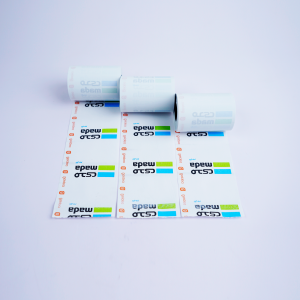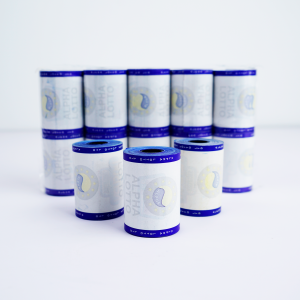Printing on thermal paper has become increasingly popular in recent years due to its ease of use and ability to produce high-quality prints.
Thermal paper is a kind of paper coated with a special chemical substance. The printing process involves heating the coating to create a clear and accurate image on the paper. The heat source is usually a thermal printer, which uses a thermal print head to generate the necessary heat.
One of the main advantages of printing on thermal paper is its speed. Since no ink or toner cartridges are required, the printing process is much faster than other printing methods. This makes it ideal for high-volume printing, such as in retail environments where receipts need to be generated quickly.
In addition to speed, thermal paper printing also offers excellent print quality. The heat generated by the printhead triggers a chemical reaction in the coating, resulting in clear and detailed images. This is especially beneficial for printing text, barcodes, and simple graphics. These prints are also smudge and fade resistant, ensuring the message remains legible over time.
Additionally, thermal paper printing is economical. Since there are no consumables like ink or toner involved, the only ongoing cost is purchasing the thermal paper roll. This makes it a cost-effective solution for businesses that need to print continuously, as they can save significant money on ink or toner.
Despite these advantages, thermal paper printing has some limitations. First, prints are sensitive to heat, light and humidity. Prolonged exposure to these elements can accelerate the fading process, causing print quality to degrade over time. Therefore, it is important to store thermal paper printouts in a cool, dry environment.
Secondly, thermal paper printing has limited color options. Unlike inkjet or laser printers, which can produce a wide range of colors, thermal printers typically use only a few basic colors, such as black and red. This can be a disadvantage for businesses that require bright and colorful prints.
Finally, thermal paper printouts cannot be easily changed or edited. Once an image is printed, it is permanent and cannot be modified. This can be a disadvantage in situations where printing information needs to be frequently updated or modified.
To sum up, thermal paper has fast printing effect, high printing quality and high cost performance. It’s a popular choice for businesses that need fast and reliable printing, such as retail or banking. However, it is important to consider these limitations and take appropriate measures to ensure the longevity and quality of thermal paper printing. Overall, thermal paper printing is a convenient and efficient solution for a variety of printing needs.
Post time: Nov-15-2023



